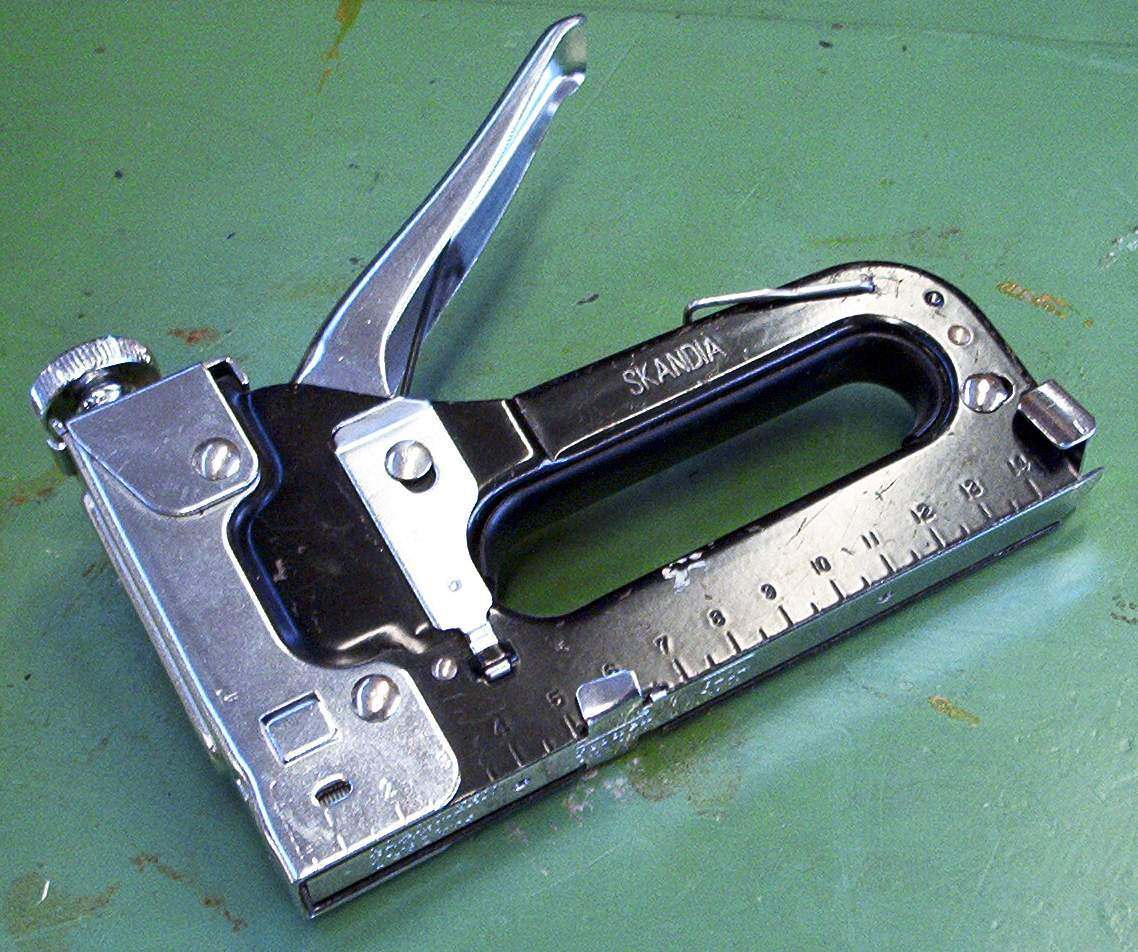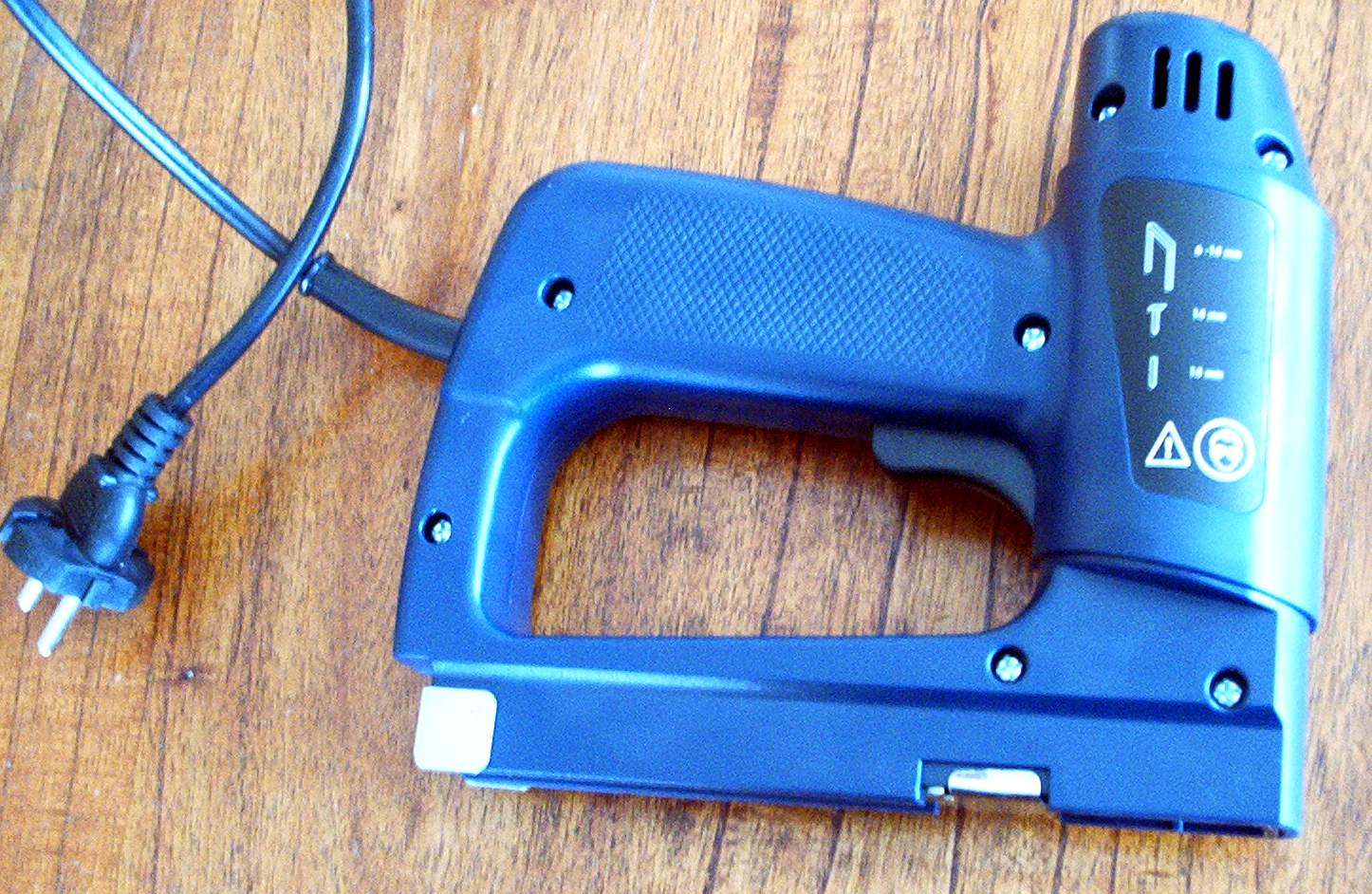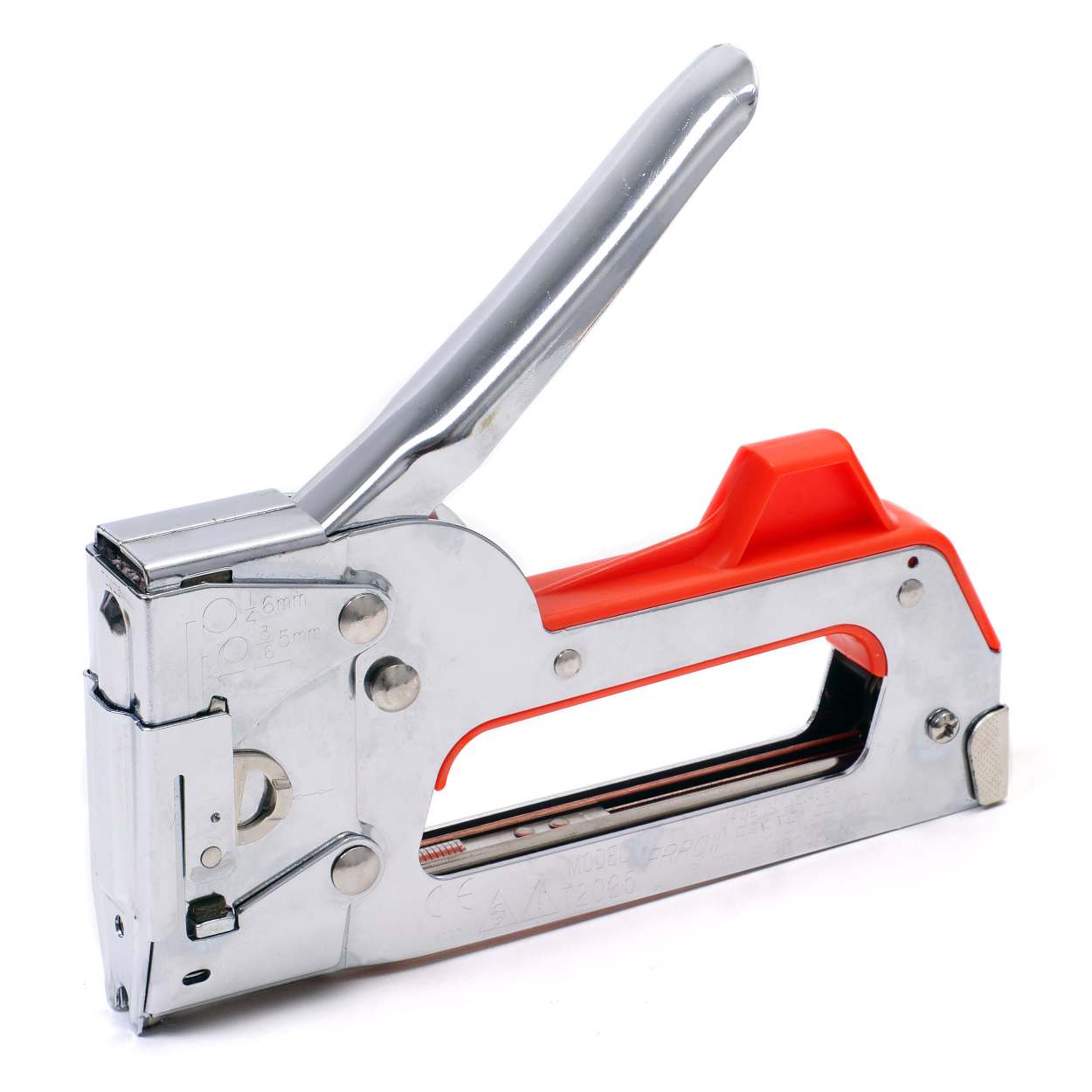Staple guns are versatile tools used in a wide range of projects, from crafting and upholstery to construction and home repair. Their ability to fasten materials quickly and securely makes them indispensable in both professional and DIY contexts.
However, one common question that arises is whether a staple gun can go through metal, a material known for its durability and resistance. This article aims to shed light on the capabilities of staple guns, including their effectiveness on metal surfaces and will provide a deeper understanding of the different types of staple guns available, their uses, and tips for choosing the right one for your project.
What is a Staple Gun?
A staple gun is a handheld tool designed to drive metal staples into various materials, providing a quick and secure method of fastening. Unlike the standard office stapler, staple guns are built to handle a broader range of materials, including wood, fabric, plastics, and even certain types of metal with specific models. Staple guns come in various forms, including manual, electric, and pneumatic types, each suited to different tasks and levels of usage intensity. Here are some details about these main types of staple guns.
- Manual staple guns require physical force from the user to drive the staple, making them suitable for smaller projects or light use.
- Electric staple guns, powered by batteries or a power cord, offer more consistent driving power with less effort, ideal for medium-duty tasks.
- Pneumatic staple guns, which operate using compressed air, are the most powerful, capable of handling heavy-duty applications with ease.
Can a Staple Gun Go Through Metal?
The straightforward answer to whether a staple gun can go through metal is: it depends on the type of staple gun and the thickness of the metal. Most conventional staple guns, especially those designed for home use or light crafts, are not built to penetrate metal. These tools are primarily intended for wood, fabric, and other softer materials. However, there are heavy-duty staple guns, including pneumatic and electric models, that have the power to drive staples into thinner metal surfaces.
Pneumatic staple guns, which use compressed air to increase force, and electric staple guns, known for their consistent driving power, can handle tougher materials, including thin sheet metal when equipped with the appropriate staples. It’s crucial to note that even with these more powerful models, the metal’s thickness and the staple’s length and material play significant roles in determining the outcome. For projects involving metal, staples made of stronger materials and designed specifically for the task are necessary.
Other Interesting Facts About Staple Guns
Staple guns are fascinating tools with a range of applications and features that go beyond simple fastening tasks. Here are some interesting facts about staple guns that highlight their versatility and importance in various projects:
- Variety of Staples: Staple guns use different sizes and shapes of staples, each designed for specific materials and purposes. From flat and narrow crowns for upholstery to wide crowns for insulation and roofing, the right staple type ensures optimal performance and material integrity.
- Safety Mechanisms: Many staple guns come equipped with safety mechanisms to prevent accidental firing. These features may include trigger locks, safety noses that require pressure to fire, and shields to protect the user from staple kickback, enhancing the tool’s safety during use.
- Adjustable Power: Some models of electric and pneumatic staple guns offer adjustable power settings. This allows users to control the force with which the staple is driven, ensuring that delicate materials aren’t damaged and tougher materials are adequately penetrated.
- Longevity and Durability: Staple guns are designed for durability, often constructed from robust materials like steel or high-impact plastics. With proper maintenance, including regular cleaning and appropriate storage, a staple gun can last for many years of frequent use.
- Ergonomic Designs: Ergonomics play a significant role in the design of staple guns, with features like padded grips and balanced weight distribution to reduce user fatigue. This is particularly important for projects that require extended use of the tool.
- Historical Use: Staple guns have been around for decades, evolving from simple manual devices to the sophisticated electric and pneumatic models available today. Their development has paralleled advancements in materials science and manufacturing technologies.
- Wide Range of Applications: Beyond typical uses in construction and upholstery, staple guns are also used in art installations, set design, and even in medical settings as an alternative to sutures for closing wounds.
- Compatibility with Other Fasteners: Some staple guns are designed to be multi-functional, capable of firing not just staples but also nails, pin nails, or brad nails, making them even more versatile tools for DIY enthusiasts and professionals alike.
Tips for Choosing a Staple Gun
Choosing the right staple gun for your project is crucial for achieving the best results and ensuring safety. Here are several tips to consider when selecting a staple gun:
- Identify the Project Requirements: Understand the nature of your project. Different tasks require different types of staple guns. For example, upholstery work might call for a fine wire staple gun, while construction projects might benefit from a heavy-duty model.
- Select the Right Type: Consider the three main types of staple guns – manual, electric, and pneumatic – and decide which best suits your needs based on the effort required, the precision needed, and the volume of work.
- Check for Staple Compatibility: Make sure the staple gun you choose is compatible with the size and type of staples needed for your project. Some guns are versatile, accepting multiple sizes and types, while others are more specialized.
- Ergonomics Matter: Look for a staple gun with an ergonomic design, especially if you’ll be using it for extended periods. Features like a comfortable grip and easy-to-use trigger can reduce hand fatigue and improve overall usability.
- Consider Power Source: For electric and pneumatic staple guns, consider the power source. Electric models offer portability and are ideal for light to medium tasks, while pneumatic guns, which require an air compressor, offer more power for heavy-duty jobs.
- Durability is Key: Opt for a staple gun made from high-quality materials capable of withstanding regular use. Metal construction tends to offer more durability than plastic.
- Safety Features: Look for staple guns with built-in safety features, such as trigger locks and safety noses, to prevent accidental firing. These features are crucial for safe operation.
- Adjustability: Some projects may benefit from adjustable power or depth settings, allowing you to control how deeply staples are driven. This feature is particularly useful for working with materials of varying thicknesses.
- Read Reviews: Before making a purchase, read reviews from other users. Personal experiences can provide valuable insights into the performance and reliability of different staple gun models.
- Budget Considerations: Set a realistic budget while keeping in mind that higher-priced models often offer greater durability and features. However, there are many affordable options that do not compromise on quality.
Conclusion
While staple guns are incredibly versatile tools useful in a variety of projects, whether they can penetrate metal depends on the type of staple gun and the thickness of the metal. Heavy-duty models, particularly pneumatic and electric ones, are capable of fastening materials to thin metal surfaces, given the right conditions and staples.
Beyond their capacity to work with metal, staple guns come in various forms, each suited to specific tasks, from light crafting to heavy construction work. Understanding the different types of staple guns, their applications, and how to choose the right one for your project can significantly enhance your work, making tasks easier and outcomes more professional.




